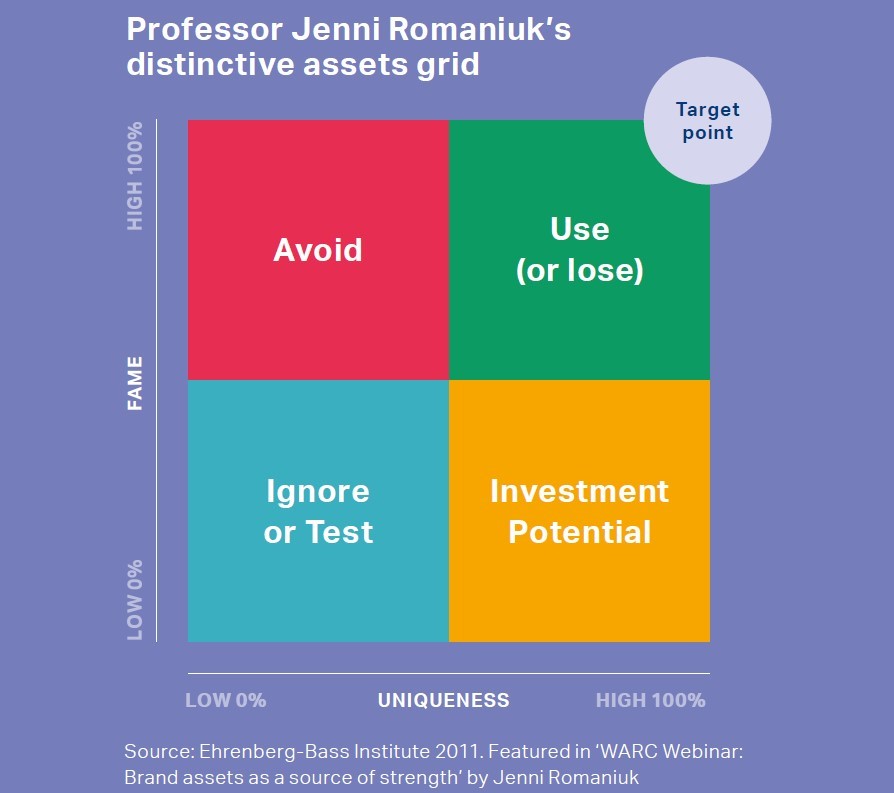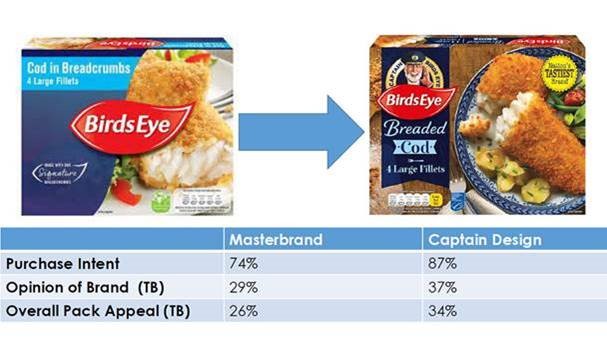WARC from Home is a new series to help subscribers to brush up on the essentials of marketing during the COVID-19 lockdown.
Every week we’ll guide you round the latest thinking on a key topic, pointing you in the direction of must-read articles, seminal research papers and essential webinars, to ensure you are top of the class when we all finally return to office life. Find all WARC from Home content here.
Today we’re getting started on distinctive brand assets, a concept increasingly vital for brands looking to stand out in cluttered digital media ecosystems. We’re seeing more brands recognise the power of their assets, and put money into building them and working with them.
What are distinctive brand assets?
A distinctive brand asset is a non-brand-name trigger for a brand name in category buyer memory. These can take verbal, visual or auditory form: think of Mastercard’s deep associate with the word 'priceless', McDonald’s instantly-recognisable golden arches, or Intel’s famous five-note mnemonic.
The Ehrenberg-Bass Institute has led the way in shaping thinking around the importance of distinctive brand assets, so its writing on the subject provides an ideal starting point – along with WARC’s Evidence deck, What is the role of distinctive brand assets.

Before getting started, it’s important to note that distinctiveness is not the same as having a differentiated positioning in the market; distinctiveness could simply be based on colour (‘the red one’), for instance.
Paul Dervan at marketing consultancy Alternatives goes into more detail on this distinction in his WARC Best Practice article, Marketing lesson: The differentiation and distinctiveness debate.
Essential reading:
- Building and employing distinctive brand assets by Jenni Romaniuk, Associate Director at the Ehrenberg-Bass Institute (Admap Magazine, May 2018)
- Developing brand assets by Dominic Twose, formerly Global Head of Knowledge Management at Millward Brown (WARC Best Practice, January 2020)
For a deeper dive:
- Brand assets as a source of strength (WARC Webinar, 2014)
OK, but what’s the evidence?
There’s a growing volume of data to show that distinctive brand assets have a positive impact on marketing effectiveness.
A recent study by Kantar Millward Brown, for instance, found brands with the strongest assets are on average 52% more ‘salient’ than their rivals – in other words, they are much more likely to spring to mind when consumers are shopping within the category.
Elsewhere, a meta-analysis of over 2,000 pieces of video creative by Ipsos examined the relationship between effectiveness and the presence (or not) of brand assets. Aside from brand logo and colour, less than 50% of ads deployed a distinctive brand asset – yet high-performing creative showed them on average +34% more often.
For a deeper dive:
- Ipsos Views: Power of you - distinctive brand assets (Research on WARC, February 2020)
So what’s a ‘Fluent Device’ then?
In short, it’s a type of distinctive brand asset used primarily in advertising.
Our brains constantly look for patterns and shortcuts (heuristics) to lighten the cognitive load; easily-recognisable brands simplify our decision-making processes. A ‘Fluent Device’ is a creative conceit (slogan or character) used consistently as part of long-running campaigns to help brands create that memorability – from Kellogg’s Tony the Tiger to The Aflac Duck.
Marketing research company System1 Group first began talking about the concept in 2017. An assessment of 400 long-term campaigns running since 1998 found that those brands featuring recurring mascots are more likely to have gained new customers, increased market share, boosted profits and reduced consumer price sensitivity.
Essential reading:
- How to craft memorability in multi-platform advertising by Orlando Wood, Chief innovation officer at System1 Group (Admap Magazine, September 2018)
- Flatland: Addressing the crisis in video advertising creativity by Orlando Wood, Chief innovation officer at System1 Group (Admap Magazine, September 2019)
For a deeper dive:
- Fluent Devices and the forgotten art of memorability (WARC Webinar, December 2017)
Any real-world examples?
Plenty.
This year alone we have seen clever examples of advertisers including McDonald’s and Doritos dropping their brand name from ads and relying instead on product shape, ingredients and colours to prompt consumer recognition. Also in the past 12 months, Mastercard has launched a sonic identity – including an auditory logo, or ‘mogo’ – to help consumers suffering with “visual overload”.
For more in-depth insights on how the use of distinctive brand assets has increased effectiveness, these case studies provide a useful starting-point:
- Weetabix and its agency Bartle Bogle Hegarty described the breakfast cereal brand’s revival of an abandoned strapline as akin to discovering “a Rembrandt in the attic” – a move which helped to deliver £4.5m in additional revenue in a declining category.
- Frozen food company Birds Eye brought back its well-loved Captain Birdseye character and updated him for today’s consumers, making him more authentic and laid back, resulting in a media ROI increase of 24%.

- Cheetos identified a key brand asset in the shape of the cheese puff itself. The brand created an online ‘Cheetos Museum’, featuring real Cheetos found by real people that look like real things, including Abraham Lincoln, the Statue of Liberty, the Loch Ness Monster and more.
We hope you enjoyed this lesson and found it useful. Please do share any feedback, and get in touch with the WARC team if you would like to find out more.
Keep well.

